Content Warning: Kenshi is a post-apocalyptic setting and does not shy away from genre tropes, such as brutal violence, cannibalism, slavery, and death. There are genuinely some aspects of simulated horror in this game. I will be going over some of these mechanics and how they contribute to the narrative you build for yourself in Kenshi.
Kenshi is a sandbox, open-world… rpg? Squad turn-based tactics fighter? Google tells me it’s a real-time strategy game, but it has a pause button and I really don’t think calling Kenshi an RTS helps you understand what it is. It was one man’s passion project for 12 years. Over a decade of one guy’s life went into making this game and it is one of my favorite games of all time. The game has the best example of an emergent narrative that I have ever experienced. There is very little guidance and your characters are truly not the protagonists of some great story. They are trying to scrape by in a broken and devastated world.
Kenshi creates powerful emergent narratives through its brutal gameplay mechanics and no guidance, open-ended nature, allowing players to craft personal stories from their interactions with the game world. The emergence is rooted in the player’s survival and growth in a world that offers no predefined paths or stories.
The world of Kenshi has been plunged into a technological Dark Age. After an unknown disaster annihilated modern society, another unknown disaster also destroyed the ruined society that emerged from its ashes. Kenshi’s on its third broken society. The world has lost almost all of its knowledge. Everyone’s back to using straw hats and katanas. Food is scarce, controlling factions are brutal despots, and it is a daily struggle to simply survive.
From the main menu, you have the option to continue a past playthrough or start one anew. The character creator allows you to choose from one of three races, and subdivisions within them. There are humans, Shek, Hivers, and Skeletons.
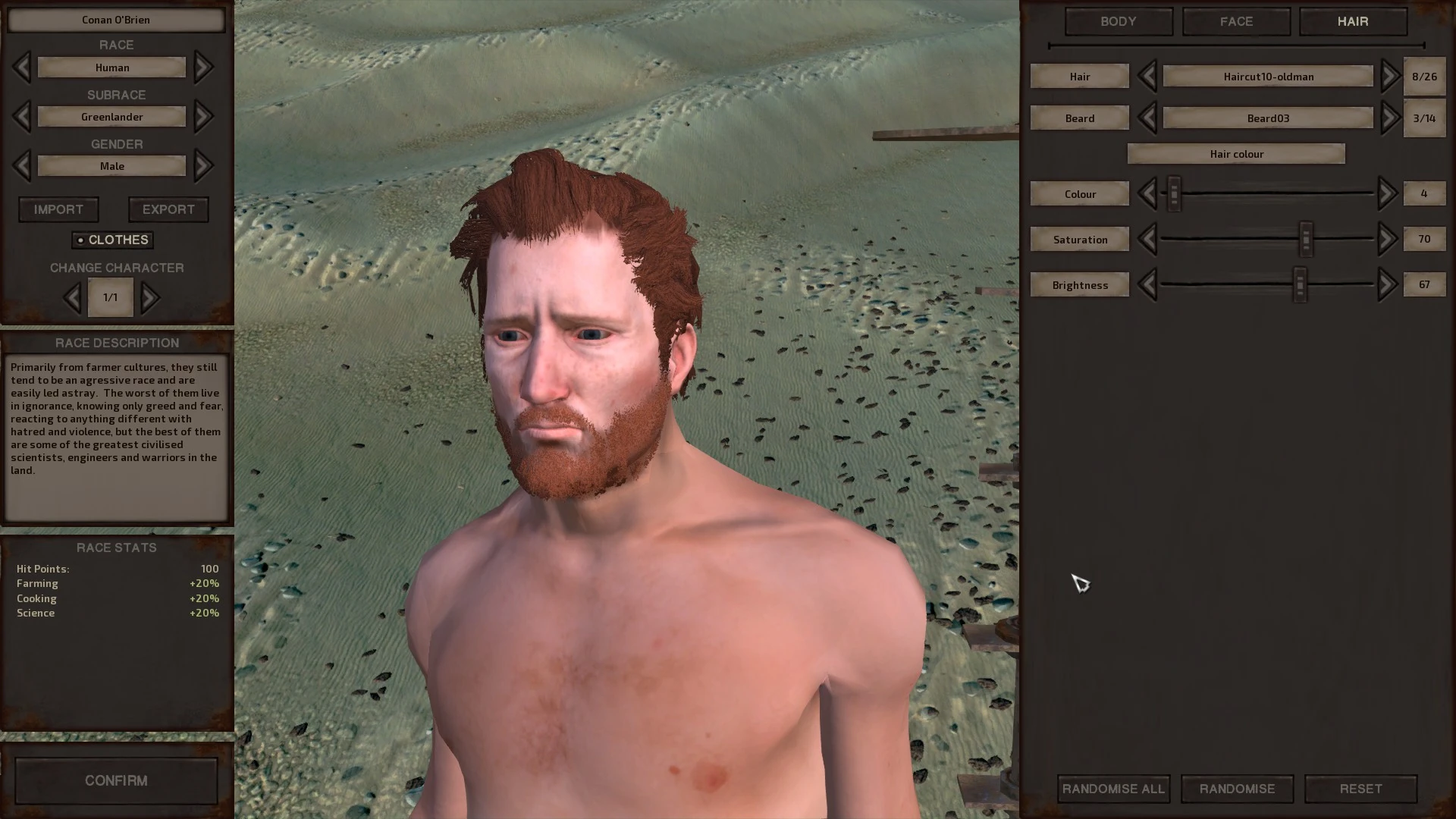
The Shek are a warlike, tribal society that believe they live only to die in battle. When they age, they take a pilgrimage to the Bugmaster, where they die fighting the blood and bone spiders underneath his control.
The Hivers are an insectoid species which communicate through pheromones and broken speech. Their duty in life is obedience to their Hive and Queen. Some hivers eventually break away from the pheromones, and are then ostracized, exiled, and denigrated as No-Hives. Those are the hivers you can create and recruit.
The Skeletons are highly advanced artificial intelligence robots which have been alive for thousands of years. They are rather reclusive and claim to have lost all memories of the past, due to “wiping their CPU” every so often.
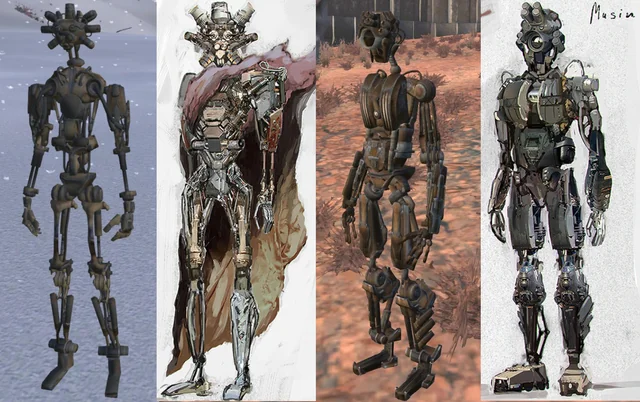
You design a character and pick a background. The backgrounds are varied and set the scene for the story that you tell yourself as you play the game. They can be as loose as just a drifting wanderer, to a wanted criminal who stole one of the world’s few remaining masterwork swords, to a slave in the Holy Nation’s pit of Rebirth. The background you choose determines where you start in the absolutely gigantic game world. They set the framework for your character’s specific journey, and the brief descriptions are characterized in such a way that they encourage you to contextualize your actions within that lens. Creating a character and picking a background aren’t exactly novel mechanics, but rather than influencing a few dialogue options like in Dragon Age Origins, Kenshi encourages you to keep building on the brief foundation it provides. To my knowledge, none of the backgrounds affect any dialogue at all in the game, but by so wildly changing the circumstances you start the game in and where you will be for many hours, you start to believe and make that background your own.
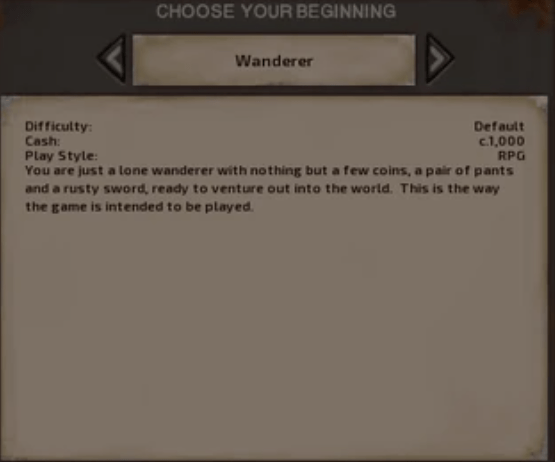

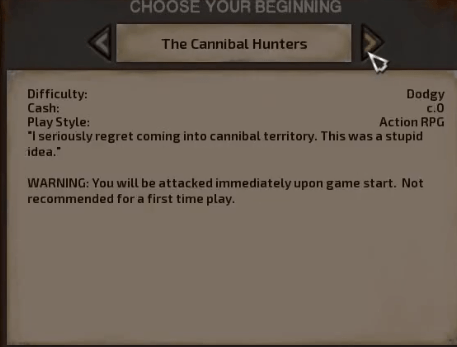
Suppose you pick the Wanderer. You’re fortunately outside of the territory of any of the major factions, in a small town called “the Hub,” but the game gives you no guidance for what to do. You have a shoddy weapon, a small sum of money, a statline of 1 across the board, and no direction. But the hunger meter starts trickling down. There isn’t a quest giver or employer to be found.
You can leave the confines of the Hub and start venturing off in any random direction. So far, your map is completely devoid of landmarks. It is difficult to make any meaningful distance from the Hub before getting attacked either by starving bandits, slavers, bone dogs, or sand ninjas. You can’t really outrun them, because your athletics is level 1 out of 100. You will get yourself beaten unconscious, robbed, and left to die in the desert. Most of them are just starving and trying to survive. The game keeps running as this happens, the only “game over” in Kenshi is when everyone in your squad has fully died, where the game will prompt you to reload a save. But even that’s not a game over, you’re free to keep watching the game world simulate itself as long as you please. It is very plausible for the character you created yourself to die at some point and to just keep playing as the squadmates you recruited. This is how Kenshi overwhelms you with its fundamental premise: you are nothing, you are not important, you are not significant, you are not the hero, but this is your story.

In the process of the beating you just received, you’ll have gained some experience in toughness, and will have earned resistance to damage. If you tried to run away, you will have gained some experience in athletics, and have earned some increased speed. If you tried to fight back, you will have gained some experience in the melee weapon style you have chosen. As you patch up your wounds, you will gain experience in first aid. Your character will have become incrementally stronger. The only way to increase a skill in Kenshi is by actively performing it. You have to fail repeatedly before you can succeed, and the trials and defeats form the emergent narrative around your party. In standard roleplaying games, you’ll level up and allocate skills at your preference. Not in Kenshi. You will get some baseline “melee combat” skill experience from fighting with a halberd, but there also exists the specific “halberd handling” skill that can only be improved through halberds specifically. A 100 in halberd handling does not impact your 1 in katana handling. It shouldn’t either, being that they are entirely different styles of combat. This makes the specialities your characters have feel truly earned.
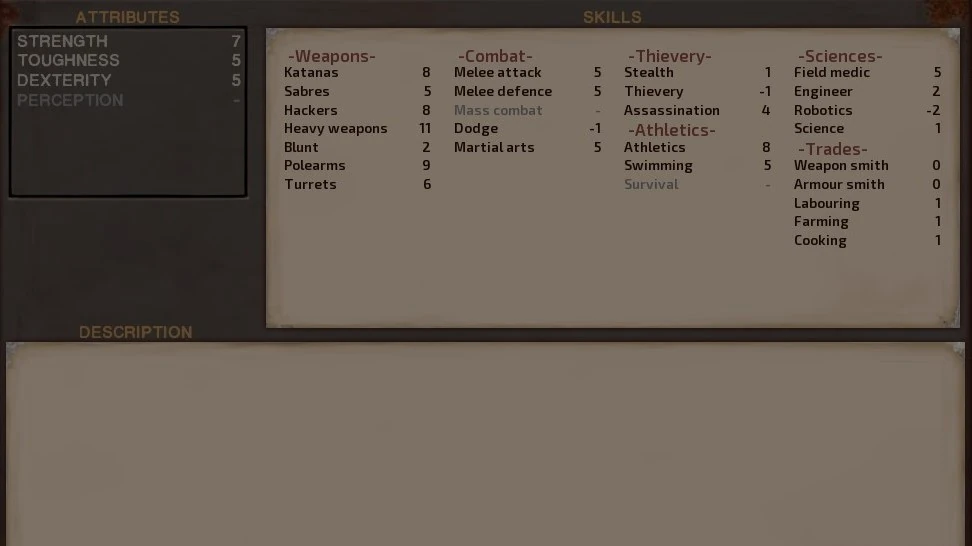
There is such a thing as training dummies… but they will only take your combat skills from 1-5. The average sand ninja has stats in the 20s-40s. You are going to need to take large risks in the process of surviving the hostile world, and these types of daring adventures feel so rewarding to pull off. However, it is difficult to do it all alone. Enemies frequently attack you in the low double digits and they travel in packs. You will want some friends. You can hit up the bars in the Hub and hire some comrades using the last of the money you started off with. You aren’t forced into this by any means, you can very plausibly play the entire game without ever recruiting an ally, but all it takes is one bad fight for you to be unconscious and bleeding so hard that you never wake up.
Combat in Kenshi is simulated down to the limb. There isn’t just one health stat, there’s a separate health bar for every part of the body. If a limb takes enough cut damage, it is severed, enough blunt damage and it is broken. If the chest or head takes enough damage, it results in unconsciousness, where conditions will continue to deteriorate until eventual expiration. Combat frequently involves dismemberment for the enemy, and if you’re not careful, your own characters. Thankfully, the game provides the option to disable this if it makes you uncomfortable. There are prosthetic limbs of course, but the only ones manufactured today are of horrible quality. The superior alternatives are the finite supply of skeleton remains.

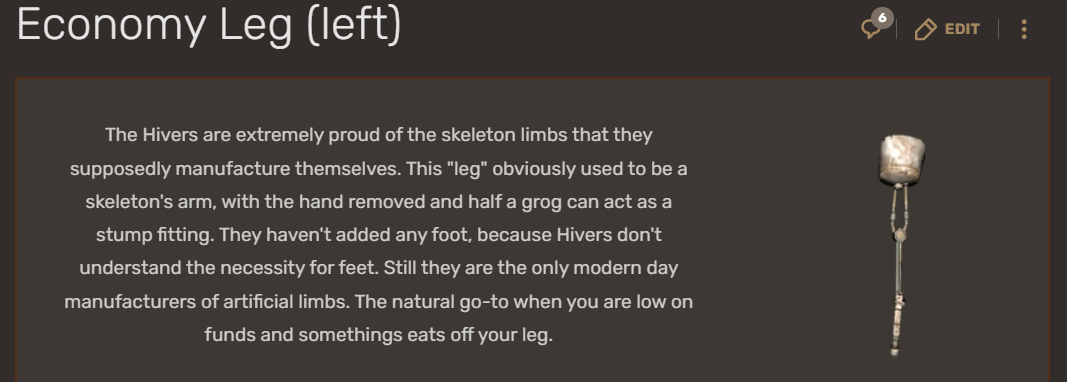
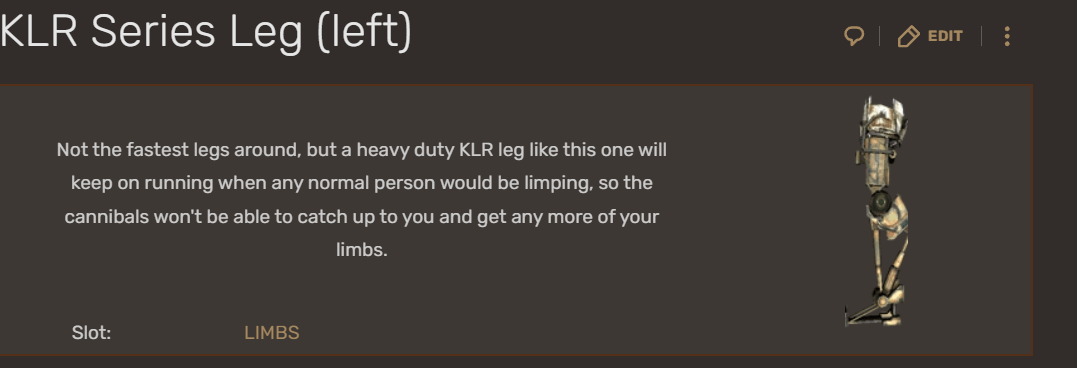
The first time I played Kenshi I went out of the Hub and saw a random goat. I attacked the goat, it promptly destroyed me, began to eat my limbs, before getting bored and wandering off. I sat there horrified, unable to do anything as my character’s health was falling faster than the passive regeneration. Wanderers and traders walked past and didn’t lend a hand, despite being five paces from the town gates.
The people of the world are so broken down and life is so cheap that a person bleeding out in the sand is barely glanced at. That’s just a function of game mechanics, right? The NPC’s simply aren’t scripted to heal random players. But that’s the story you tell yourself because of the environment the game sets you in.
The hostiles on the map don’t just fight you, they fight each other. A very common early game tactic looks something like looting the wounded and dead from a battle you did not participate in to earn some quick cash. You can even patch them up if you want to train up your first aid, but that would mean exhausting your bandage supply. I personally justify healing and looting the wounded unconscious by telling myself that I am providing a private healthcare service, where my compensation just so happens to be everything on their person. These types of “justifications” are the heart of Kenshi. Whether you’re doing something as morally dubious as “private healthcare,” or you’re hauling goods as a trader from city to city, there’s a lot of time spent just reflecting on why you’re doing what you’re doing. It was entirely your choice to pick that particular action. The game offers you so many possibilities as to how you’ll survive that it’s entirely up to the player, and before you know it, you’re creating your own coherent narrative for the party’s journey and decisions.
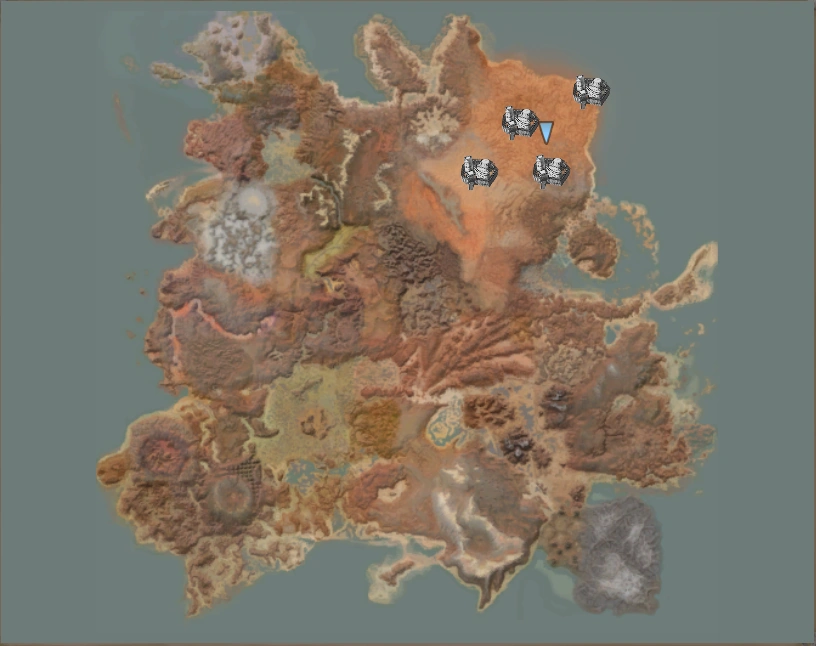
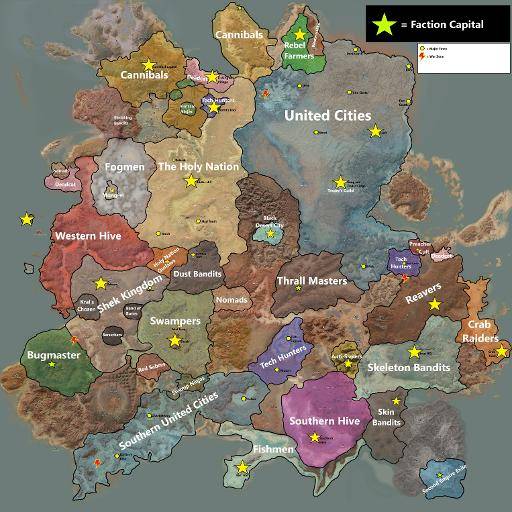
Past that early game struggle to survive, you will have a party capable of holding their own against common bandits. But that doesn’t mean you’re equipped to handle the troops that the factions wield. There are numerous factions in Kenshi. It is very easy to criticize them for their various appalling practices. The two largest are the Holy Nation and the United Cities.
The Holy Nation are religious zealots who only respect human men. All other races are enslaved, with the exceptions of skeletons, who are killed on sight. This is due to their religious teachings which have been passed down for a thousand years. It makes you wonder how they survived society’s destruction on two separate occasions, and why they hate skeletons so much. They claim that for non humans, a life of hard work and slavery will let their spirits be reborn free of sin. Their slave camp is called Rebirth. .
The United Cities accept everyone who has money. Being poor is a crime in the United Cities and simply looking a bit disheveled is sufficient excuse for the slavers which wander outside to nab you. Almost all wealth is controlled by the despotic nobility and traders guild and they are undergoing numerous rebellions from disgruntled farmers and peasants.
Slavery plays a prominent role in Kenshi’s world. Many characters and players in Kenshi will voluntarily choose to get enslaved. With no money and resources, at least then they’re provided with food and manual labor to grow stronger. From the inside of the encampments you can then organize a massive slave breakout. This can be altruistic, because you have decided to help free people. It can also be selfish, because you want more distractions. It is up to how you choose to roleplay the situation. Not every NPC wants to be freed. I was shocked when I lockpicked their cages and saw some promptly lock themselves back in or yell for the guards. There’s no dialogue tree where this is explained, it’s the game world showing you these things through actions.
You can choose a faction to support. If you’re like me, you will want to try and break down the institution of slavery. You can kidnap and assassinate the leaders of these nations yourself if you are sneaky or strong enough. You can also ally with their opposition and destroy them that way. The Holy Nation is at war with the Flotsam Ninjas, a matriarchal group who escaped the Holy Nation. They rescue slaves while professing a much more tolerant and egalitarian version of the religion. The game gives you options to try and make the world better and lets you tell the story of how it happens.
The world adapts to the changes you make to it. Create a power vacuum and it must be filled. It is rare that things turn out exclusively for the better with massive changes to the existing hierarchy. It is always a trade off. You can destroy the Holy Nation, but they are the bulk of the world’s food supply given their control of the most fertile land. It will take time for that infrastructure to be reestablished and many people are already starving. You can destroy the United Cities, but they are one of the few controllers of the (limited) institutional production which remains.
One of the most sympathetic factions are the Anti-Slavers led by Tinfist, a skeleton who campaigns relentlessly against slavery. I signed on with Tinfist once and while we destroyed all of the major slavers, we didn’t do very much reconstructing and building. The bandit population of the world skyrocketed. The game never judges you for the actions you take. Unlike Fallout, there is no karma system which tells you if you did a good or bad deed. You can help or destroy any group you please, so long as you accept the consequences and fit it into your narrative.

If you want to reconstruct and build, you can make your own settlement. You can start building anywhere on the map that isn’t a city, and each have their own special events. If you build in the Holy Nation, you get visits once a week on “Prayer Day” where you must produce a bible and pray or else your settlement will be attacked by their paladins. If you build in the United Cities, you will be subject to extraordinarily high taxation, or the United City samurai will come knocking. There’s dozens of other territories each with their own unique drawbacks and benefits. Building attracts attention and a constant onslaught by the enemies of that region, which build up raiding parties. Anytime anyone tries to make something in Kenshi, others will try to steal it. There’s so little to go around.
The world’s technology has been almost completely lost. As you build your own settlement, you will inevitably start to research and rediscover the wisdom of the past. But there’s a limit. If we think of technology in Kenshi as existing in a tier of 1-6, even with scavenging highly guarded research materials, you can at best start to manufacture tier 3. This is another way the game demonstrates the state of the world. It is easy to look on screen and see there has been devastation, but even through raiding old ruins, it is impossible to fully regain what is lost.
Most of the world isn’t filled with cities, factions, and settlements. It’s filled with strange biomes and terrifying fauna. A small hive can be found in Venge, where the rain is red and monstrous “beak things” are the apex predator. There’s a skeleton settlement in the Black Desert, where it rains acid. There’s plains where an orbital laser is constantly firing during the day. The world is so large and there are so many places to explore.
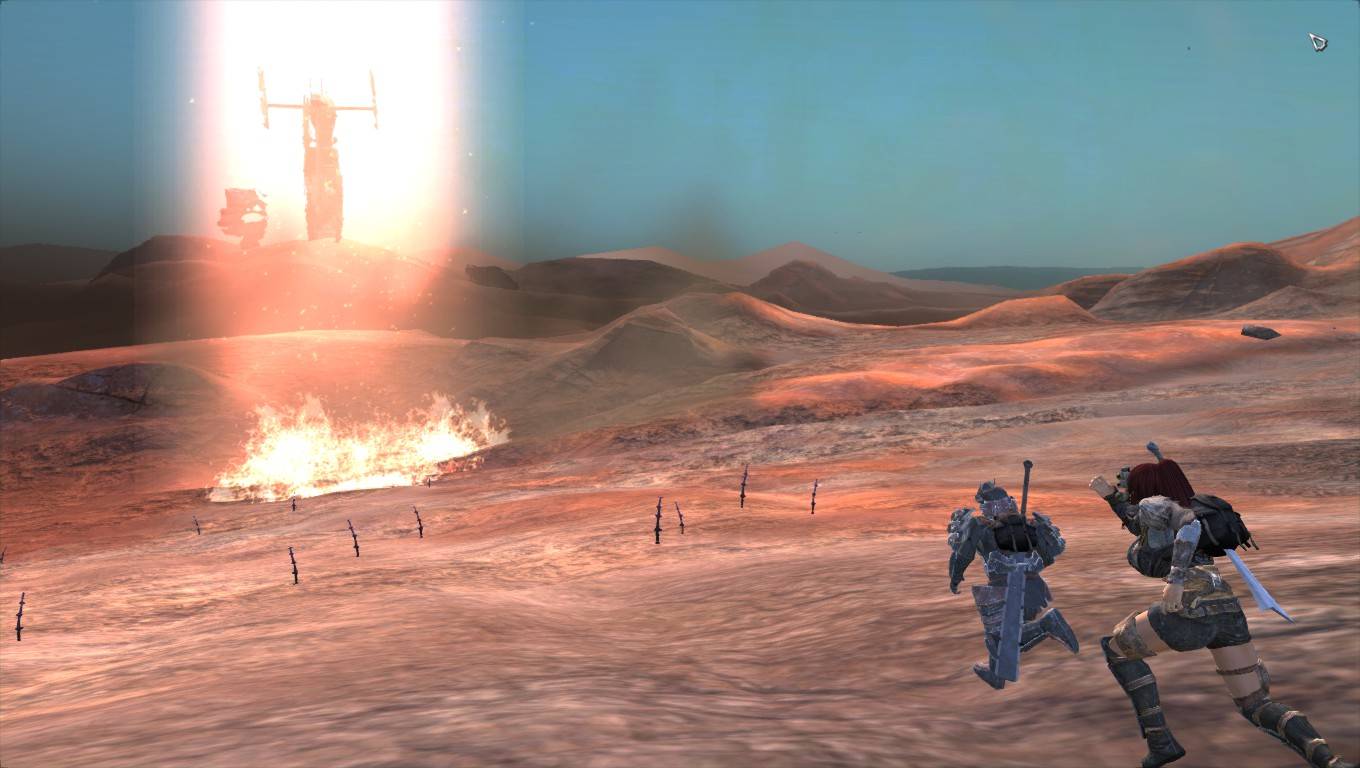
Kenshi’s strange secrets lead to many unforgettable moments. Some are bizarre but vaguely uplifting, like the village of crab farmers, who raise giant crabs for food and as war animals. You can buy crabs and assimilate them into your squad. Some are straight nightmare fuel. There’s a tiny tower near the Ashlands. It looks just like the old ruins you find research in. You walk inside, and are greeted by friendly skeletons calling you “flesh brother.” They don’t think they’re skeletons though, they think they’re humans, and they’re wearing skin. And they want yours. They have a “peeler machine.” I don’t really want to talk more about the peeler machine. If you’re curious, you can indeed ally with this faction, although only if you are a skeleton.

As you learn about the factions and meet their NPC’s, you will quickly realize that every one of them is an unreliable narrator. It is not just that they are biased towards their own faction’s beliefs, but they all have broken understandings of the world’s history and this makes it even harder to piece together what really happened. There do exist some hints, particularly by playing as a skeleton, but it’s all blurry. Item descriptions occasionally offer cryptic messages as to what existed before. In the far reaches of the Ashlands, there exists the insane skeleton Cat-lon who led the Second Empire along with Tinfist (which Tinfist will not mention). Through fighting him and reading his data, you gain some of the only concrete knowledge in the game. Cat-lon is likely the hardest fight a player can take, but there is no ending to Kenshi. The game ends when you stop playing. The player is highly encouraged to piece these bits of lore together to try and understand the history of the world. Your characters learn more at the same time you do. The narrative is like Newton’s third law, it pushes back as much as you give.
One last note on the sound. The music in the game is phenomenal. When you boot up Kenshi, the main menu theme grants you pause. Faint sirens, crickets, synths, and troubled strings convey a terrible sense of desolation. Over minutes, it slowly builds up to a powerful but tragic Cello solo in the fitting C-Minor accompanied by very simple drums, which hint at the technology. It sets the stage for the story you are going to build for yourself.
I absolutely love Kenshi. I have hundreds of hours and I haven’t come close to seeing everything. I haven’t played the game in three years but I vividly remember it so well. The stories that I built are just so memorable, the lore of the game so enticing that it is one of my favorite settings of all time. Just straw hat, katana wielding post apocalyptic survival where you are truly free to make your own adventure in any way you please.
A choice player comment that I felt like highlighting:
“Other games: Friendly tutorial which teaches you how to play the game
Kenshi: Bought one bowl of rice to travel to the next city, got my ass kicked by 17 bandits because they were hungry and they even took my wooden stick and then I had to crawl to the next bar with broken legs.”



